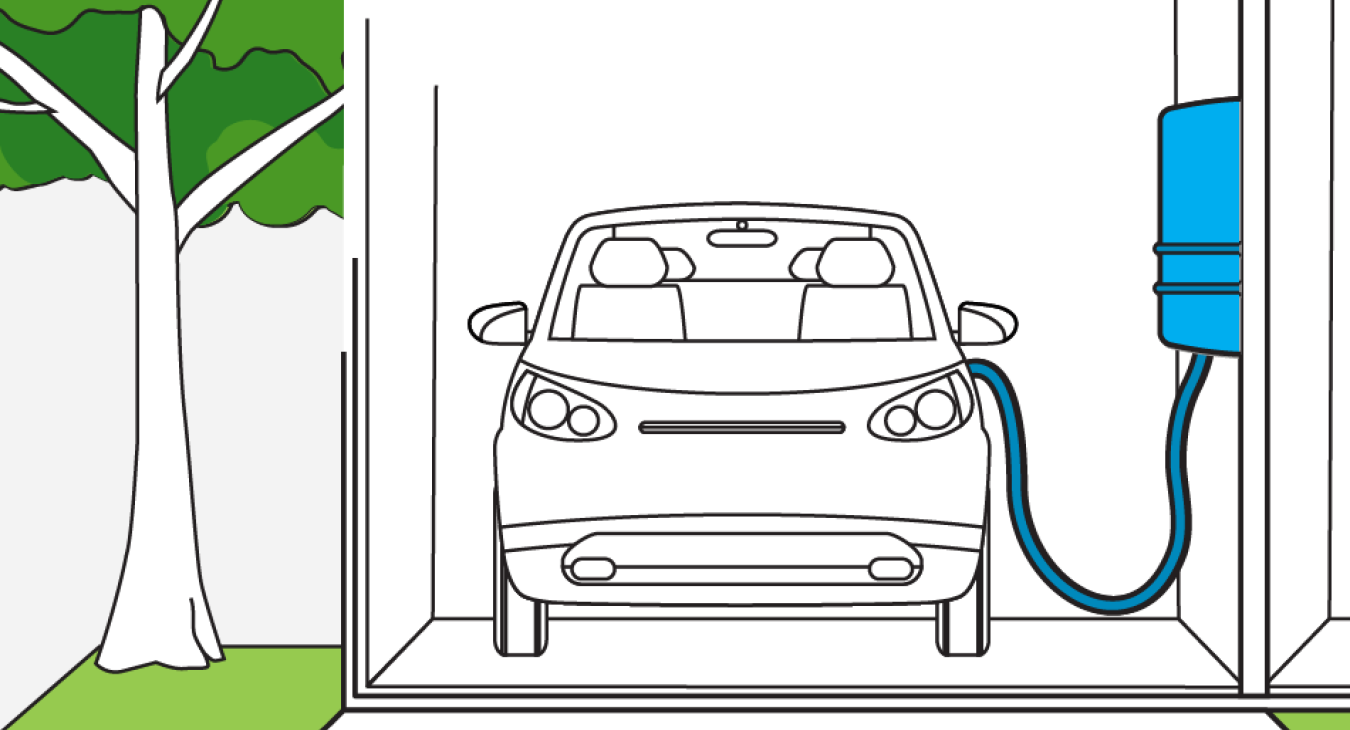Home Electric Vehicle Wiring Guidelines
Because 80 percent of EV charging happens at home, consumer demand for homes ready for or equipped with EV charging is also growing. Here are some general steps and considerations for pre-wiring a new construction home or existing home for EVs:
1. Determine the location: Identify the best location for the EV charging equipment, such as a garage or carport, taking into account accessibility, proximity to the electrical service panel, and convenience for charging.
2. Assess electrical capacity: Evaluate the electrical capacity of your home to ensure it can support the additional load of EV charging. You may need to consult with an electrician to determine if your electrical panel and service can handle the additional demand. Be sure to talk to your utility company about transformer capacity.
3. Consult local codes: Research the specific building codes, regulations, and permitting requirements in North Carolina regarding EV charger installation and electrical work. Different municipalities may have specific guidelines, so it’s important to follow the local regulations.
4. Select charging equipment: Choose the appropriate EV charging equipment for your needs. There are various options available, including Level 1 chargers (120V), Level 2 chargers (240V), and even DC fast chargers. Consider the charging speed, compatibility with your EV, and future-proofing your setup.
5. Plan for wiring and conduit: Determine the appropriate wiring and conduit requirements based on the chosen charging equipment and the distance from the electrical panel to the charging location. It’s generally recommended to use a dedicated circuit for the EV charger and install a conduit for future-proofing and ease of maintenance.
6. Install a dedicated circuit: Install a dedicated circuit from the electrical panel to the EV charging location. This circuit should be appropriately sized to handle the charging equipment’s electrical requirements and comply with local codes. Again, it’s best to consult with a licensed electrician for this installation.
7. Consider load management: If you plan to have multiple EVs or expect high electrical demand in the future, you may need to consider load management systems to distribute the power effectively without overloading the electrical system.
8. Safety considerations: Ensure proper grounding and electrical safety measures are implemented during the installation. Follow all manufacturer instructions, local codes, and safety guidelines to minimize the risk of electrical hazards.
Remember, these are general guidelines, and it’s crucial to consult with professionals and follow local regulations specific to your location in North Carolina to ensure a safe and compliant installation.

